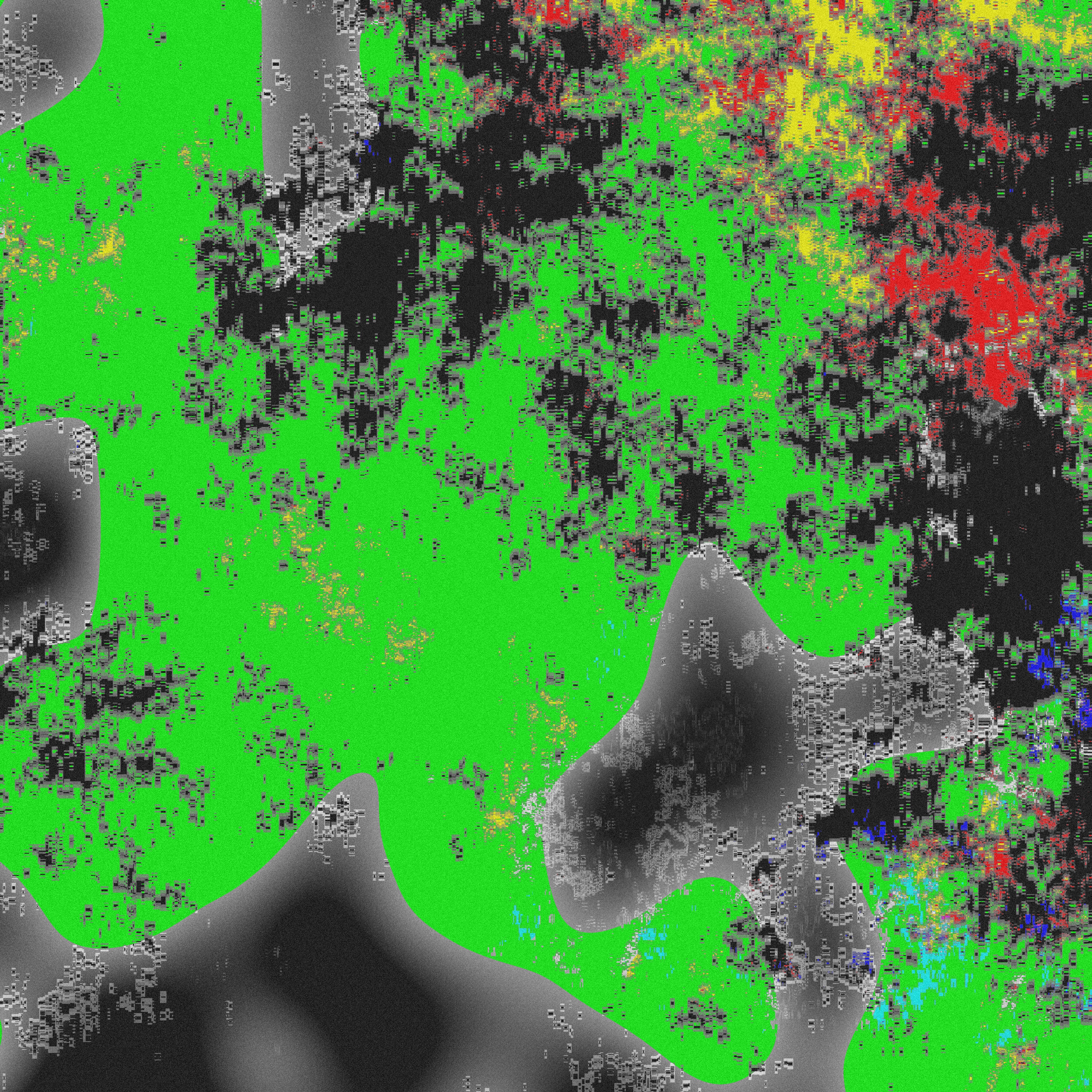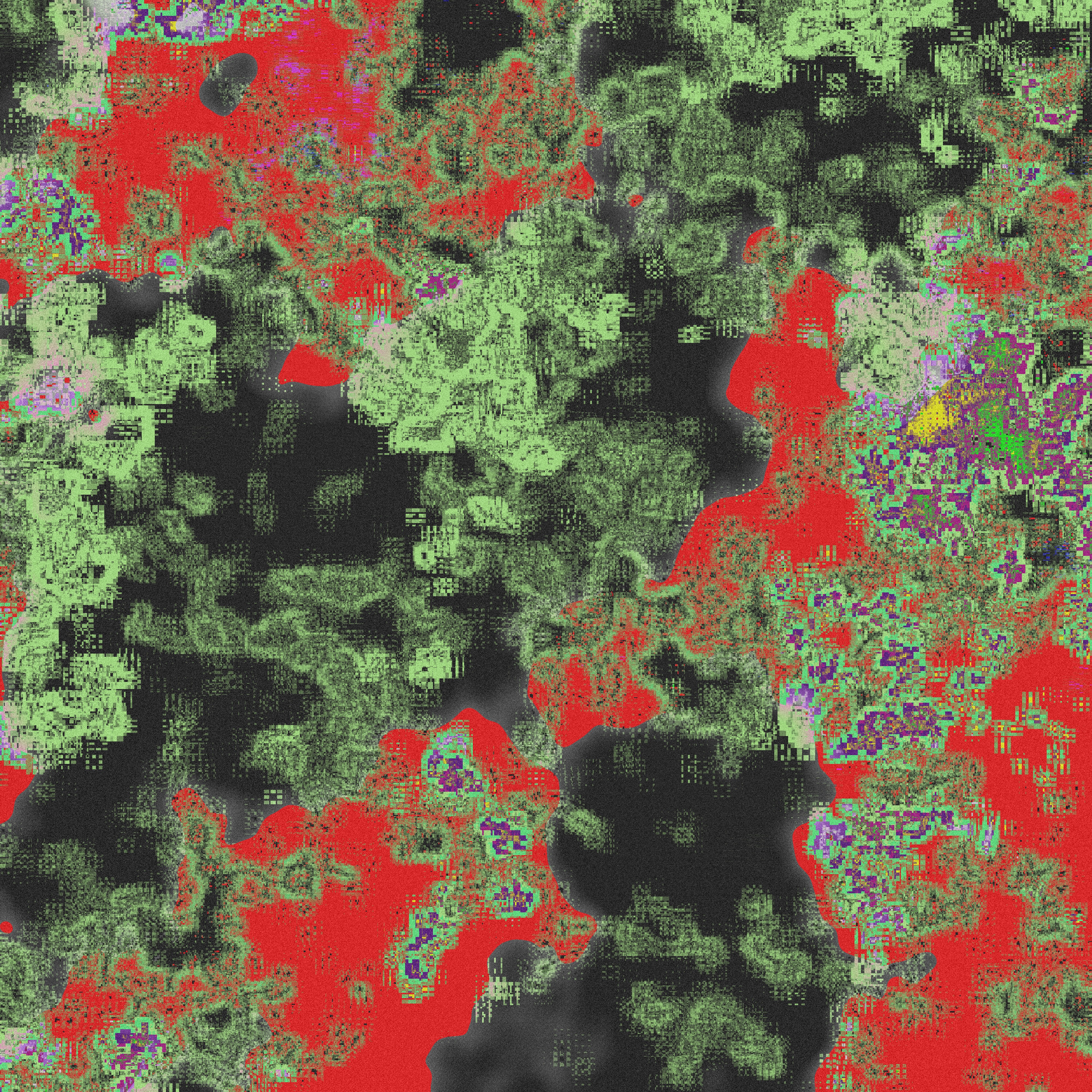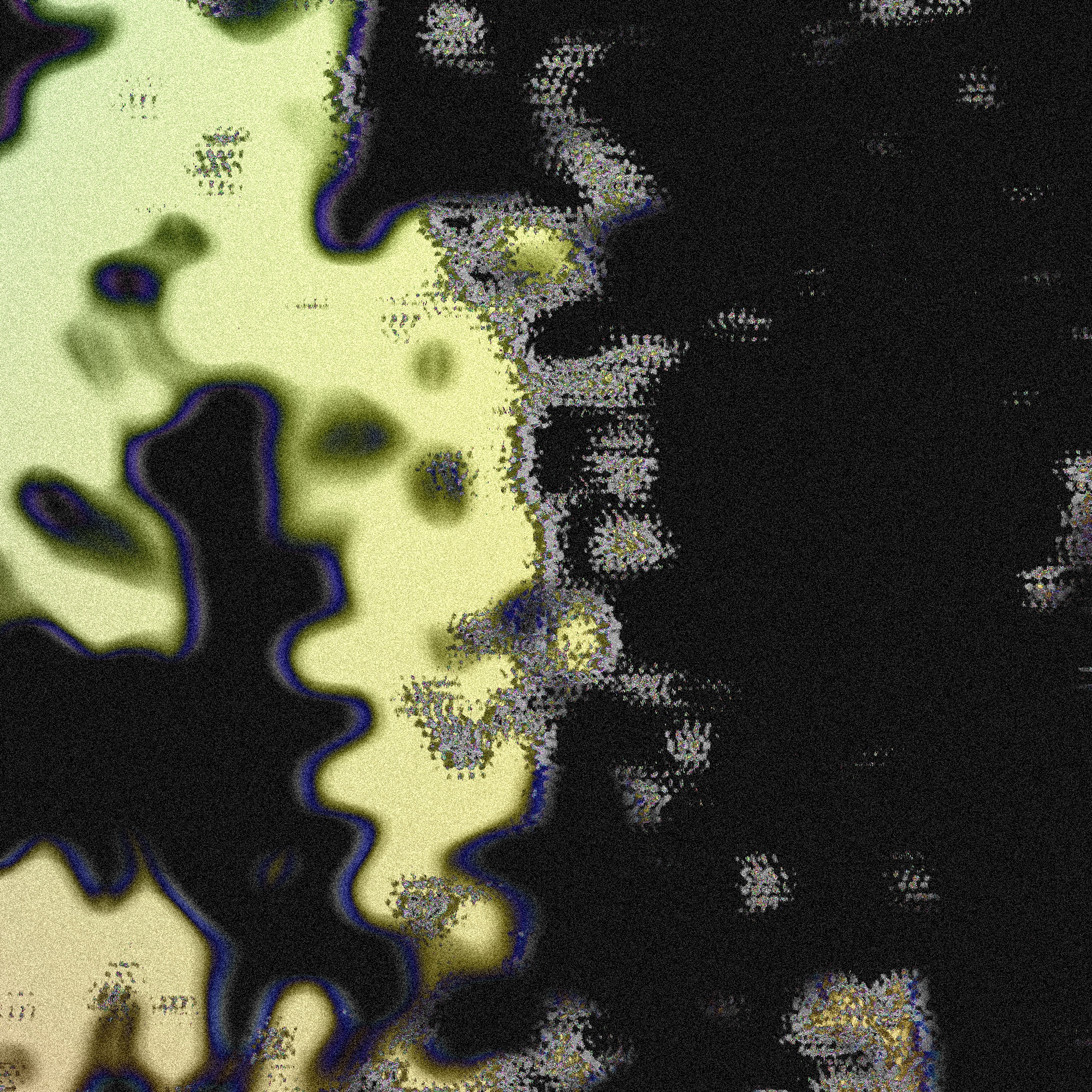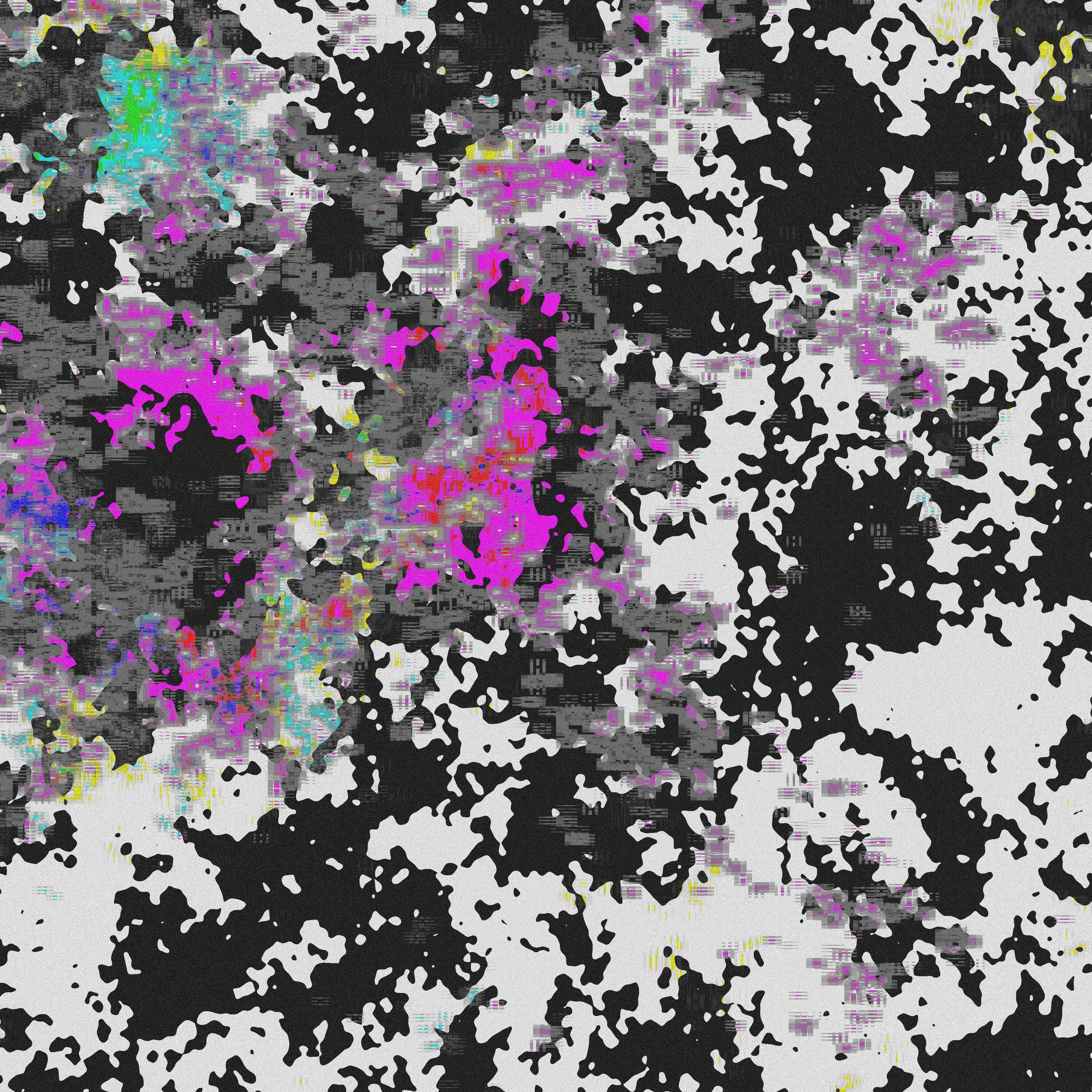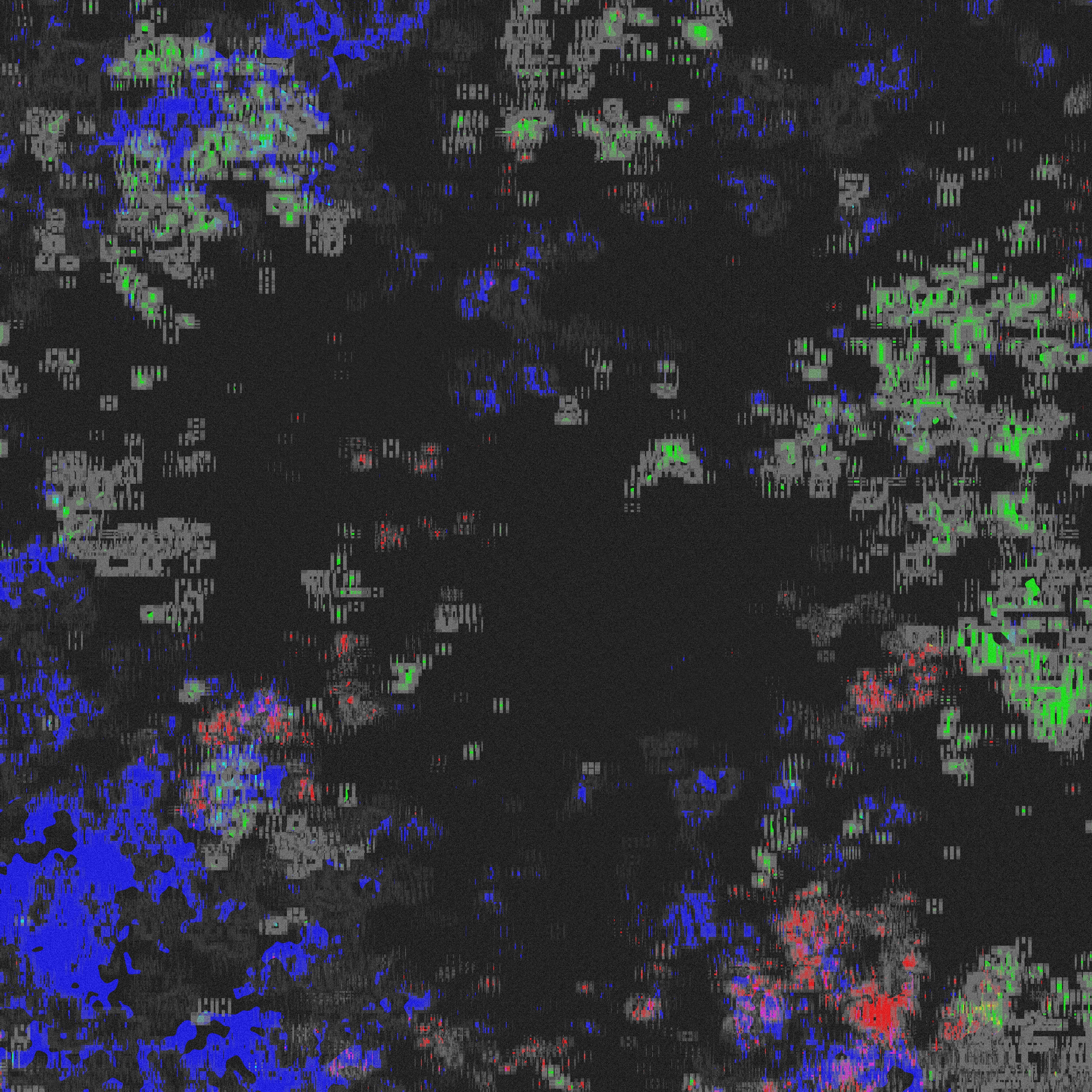Performance at Ars Electronica // 07.09.2025
Materials: Eurorack Software: AbletonProject as part of the POST COMPOST exhibition Bauhaus Universität Weimar // 15.07.23
Since the closure of the EOW 1992 in Weimar, the site has been in an exciting process of change. In the absence of anthropogenic influences, plants, fungi and micro bacteria make up every inch of the terrain on a large and small scale. They design the surfaces and textures of the EOW buildings in a wide variety of ways. Processes happen, both in the generation of biological material, as well as in the erosion and decomposition of material. These new structures form a unit, a small ecosystem of their own with the already existing infrastructure of this place. This is almost impossible to see on a large scale, due to its variety and diversity. In order to perceive these textures, you have to change perspectives and approach them to reduce your field of vision. The Installation brings the process of discovering these structures into a different environment. The photos shown were taken on expeditions through the area during the seminar and are intended to shed light these areas and textures. Each pixel of the photos taken, is converted into a vector which describes the up direction of the surface at that point and get reinterpreted onto a grid in Touchdesigner. But just like in the normal environment, you have to get closer to perceive the structures.
Materials: Arduino Uno, 3 Ultrasonic Sensors, 3D printed parts Software: Touchdesinger, Arduino IDE

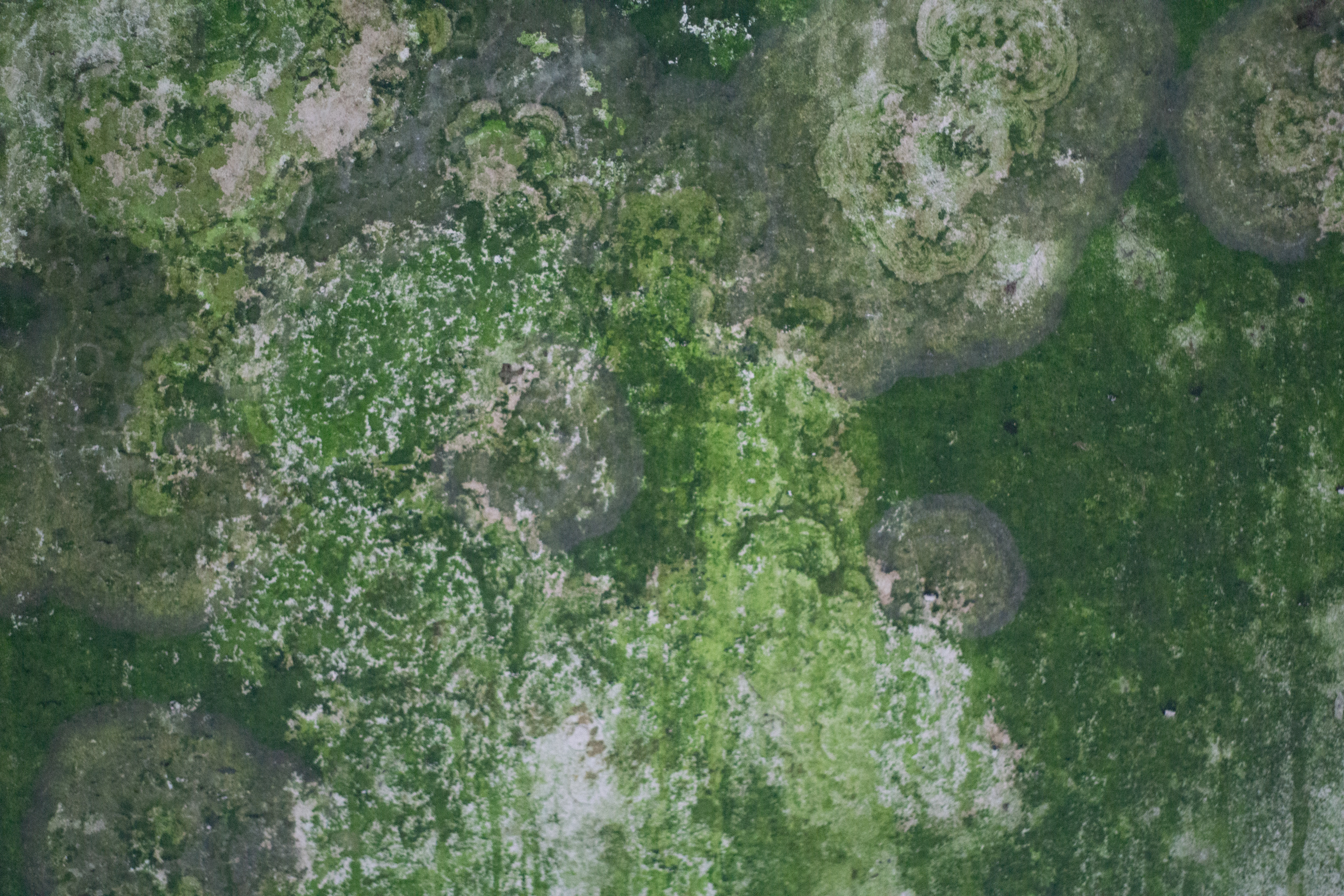
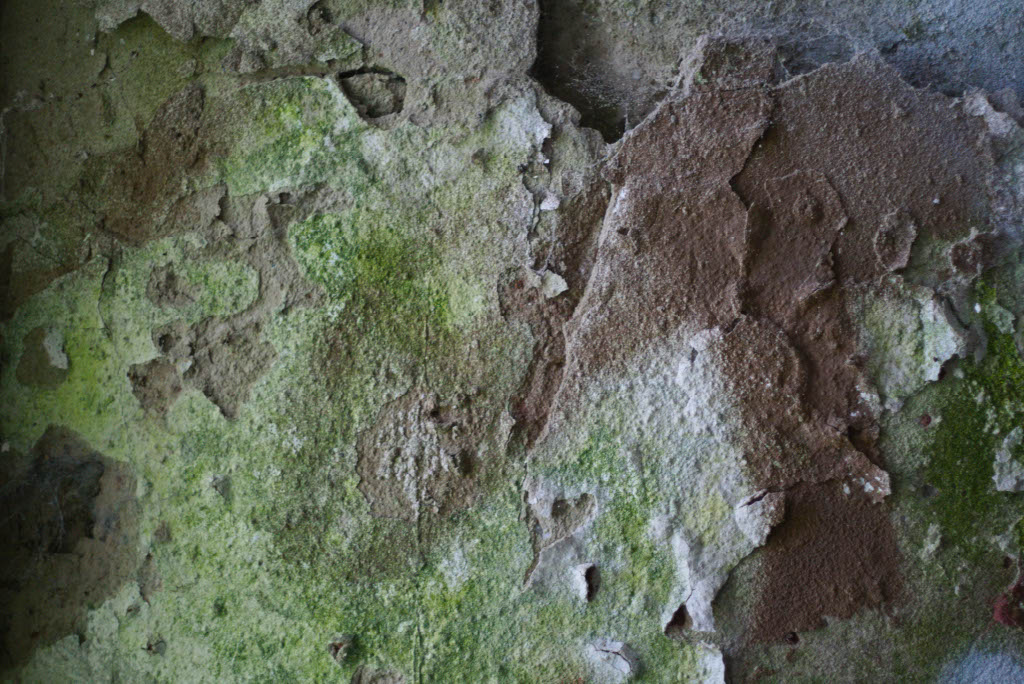
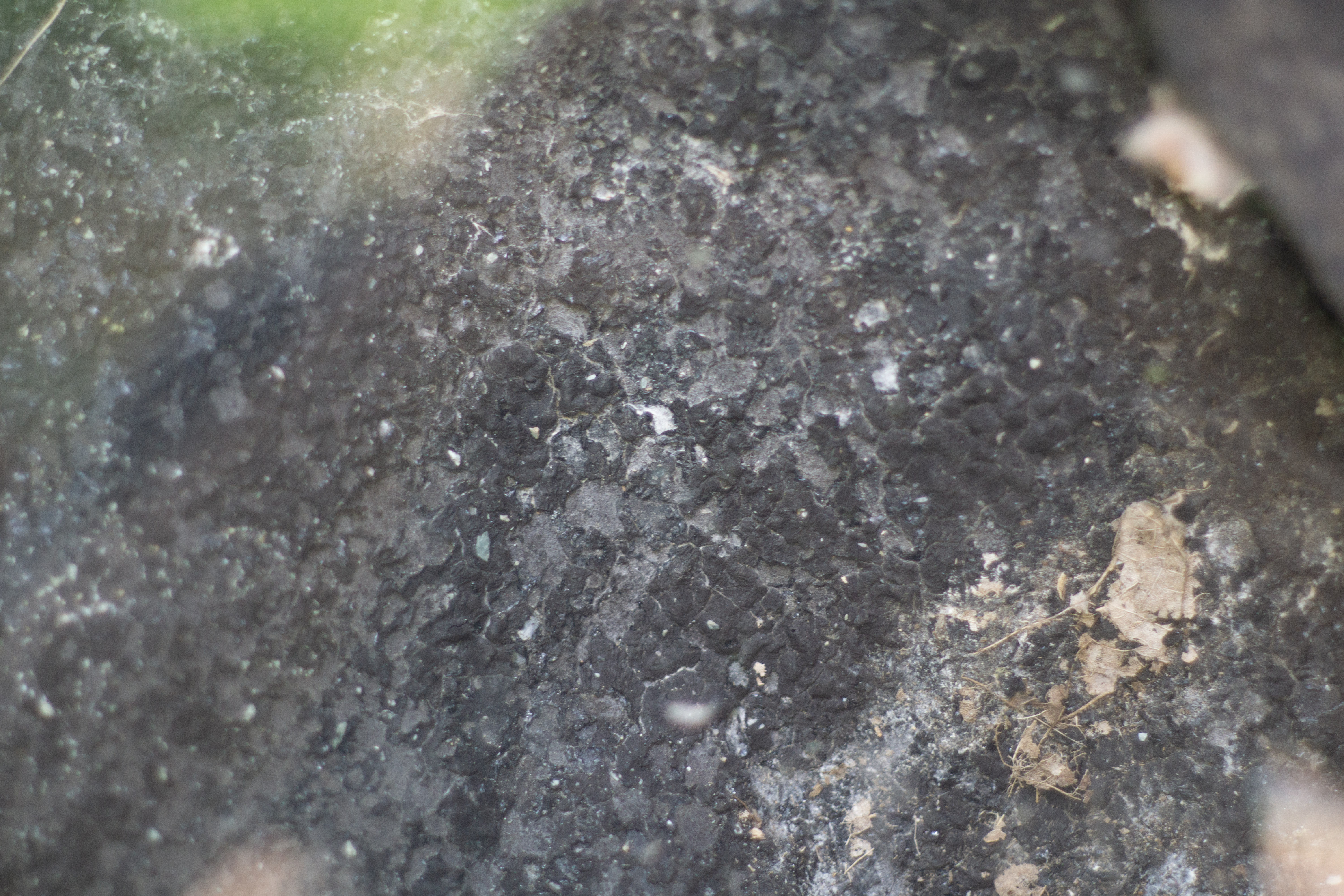
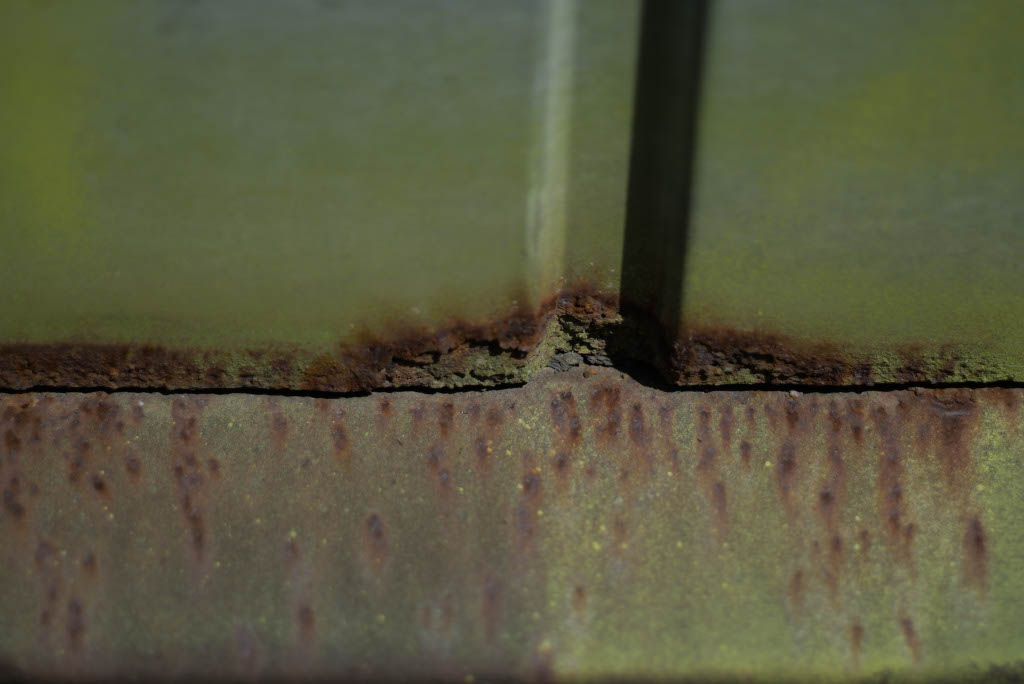
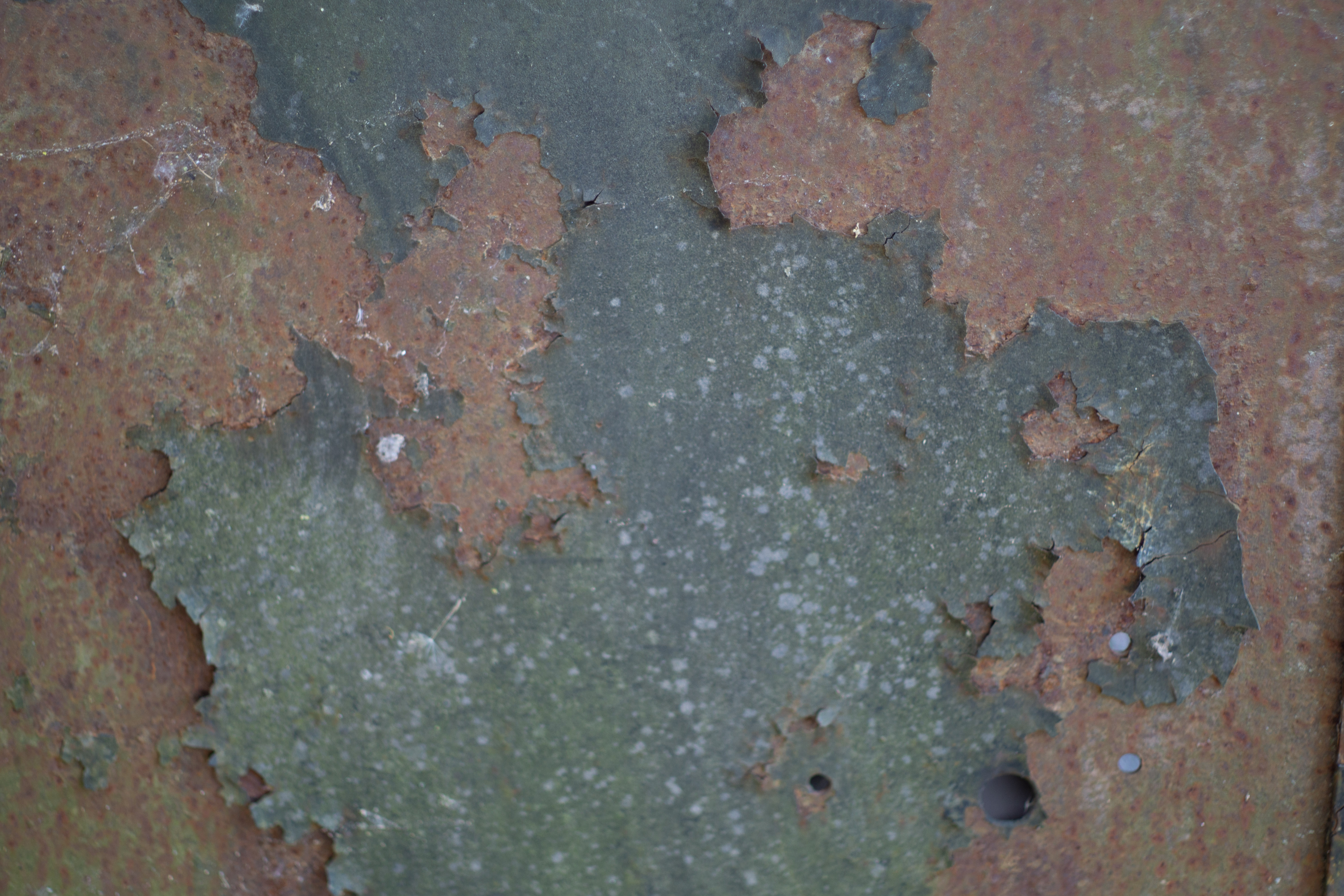

Project together with Jannik Gieler as part of the Summeary exhibition Bauhaus Universität Weimar // 04.05.2023
Parties are often used by many people as a contrast to everyday life. They offer a space to let go—a place of tolerance for ecstasy and hedonism, and a site for exchange and togetherness. The installation "An Evening in Balance" reinterprets the journey from everyday life to ecstasy within an immersive playground. The carpet serves as a symbol of daily routine while simultaneously acting as a frame for projection. In contrast, the virtual surface in the center of the installation represents escape and transformation. When stepping onto the marked areas of the carpet [ ], the playground is activated, inviting participants to collect virtual objects and gradually distance themselves from reality. At the core of the experience is a sense of shared engagement. At least two people are required to operate the virtual space using four pressure-sensitive pads. One person controls movement along the X-axis, while the other handles the Y-axis.
Materials and Tools: Carpet, projection surface, pressure sensors, Arduino, TouchDesigner, projector, projector mount (wood) The installation is built around a modified carpet. The central part of the carpet has been replaced with a projection surface. On two sides of the carpet, two pressure sensors each have been embedded using pieces of carpet and rubber matting to mark the interactive areas. A projector mounted at an angle above the carpet beams the game onto the center projection area. The game is rendered live in TouchDesigner and guides the players through four conceptual levels. Communication between TouchDesigner and the sensors is handled via an Arduino.
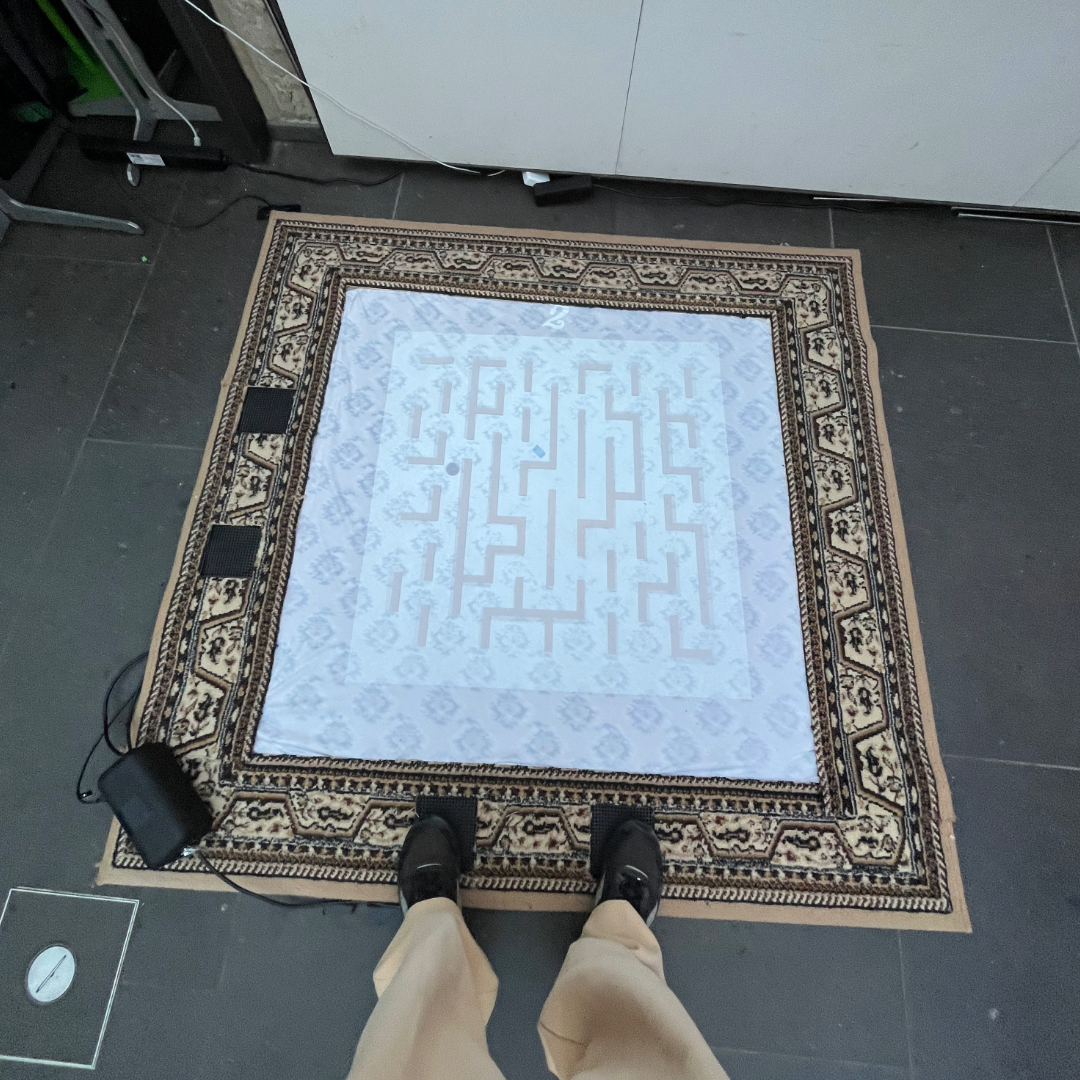





Common Ears is an immersive visual installation that was exhibited as part of the Summaery 2022 called: I Am Not Sitting in a Room // 15.07.2022
The project invites participants to reflect on the influence and impact of sound and encourages active listening. Using an iPad and its stylus, visitors on the balcony draw a sound map. As guidance, they follow the "blind listening" exercise. While drawing, the iPad screen is projected onto a wall in the exhibition space, allowing others to witness the participant’s interpretation of the surrounding soundscape. Once the participant completes their drawing, the sound map is deleted from the iPad. However, it is not lost — it gradually fades into the background of the visualization and becomes overlaid with tones captured by a sound sensor from the installation space. This process makes room for the next person's sound map and creates a layered accumulation of collective auditory memory over the course of the installation.
Our contemporary environment and society are highly visually oriented, which leads to our sense of hearing being used less and gradually deteriorating. The blind listening exercise, in combination with the visualization, is intended to encourage the training and sharpening of our auditory perception. Each person is an active part of the sonic environment. Using an Arduino and a sound sensor, the sounds in the space are visualized through dots of varying sizes, depending on their volume. This makes visitors aware that they themselves are part of the sound atmosphere — they influence it and help shape it.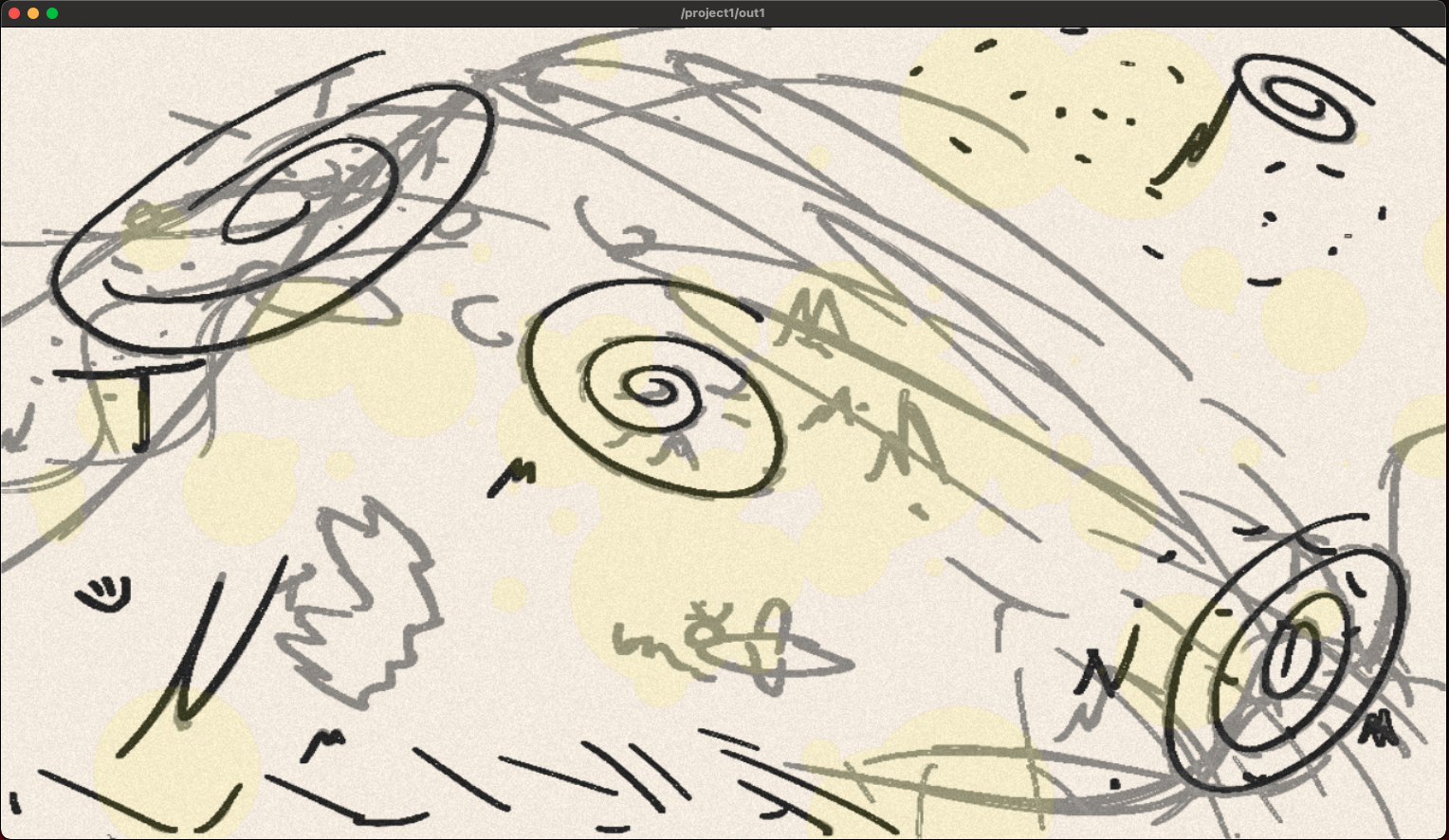
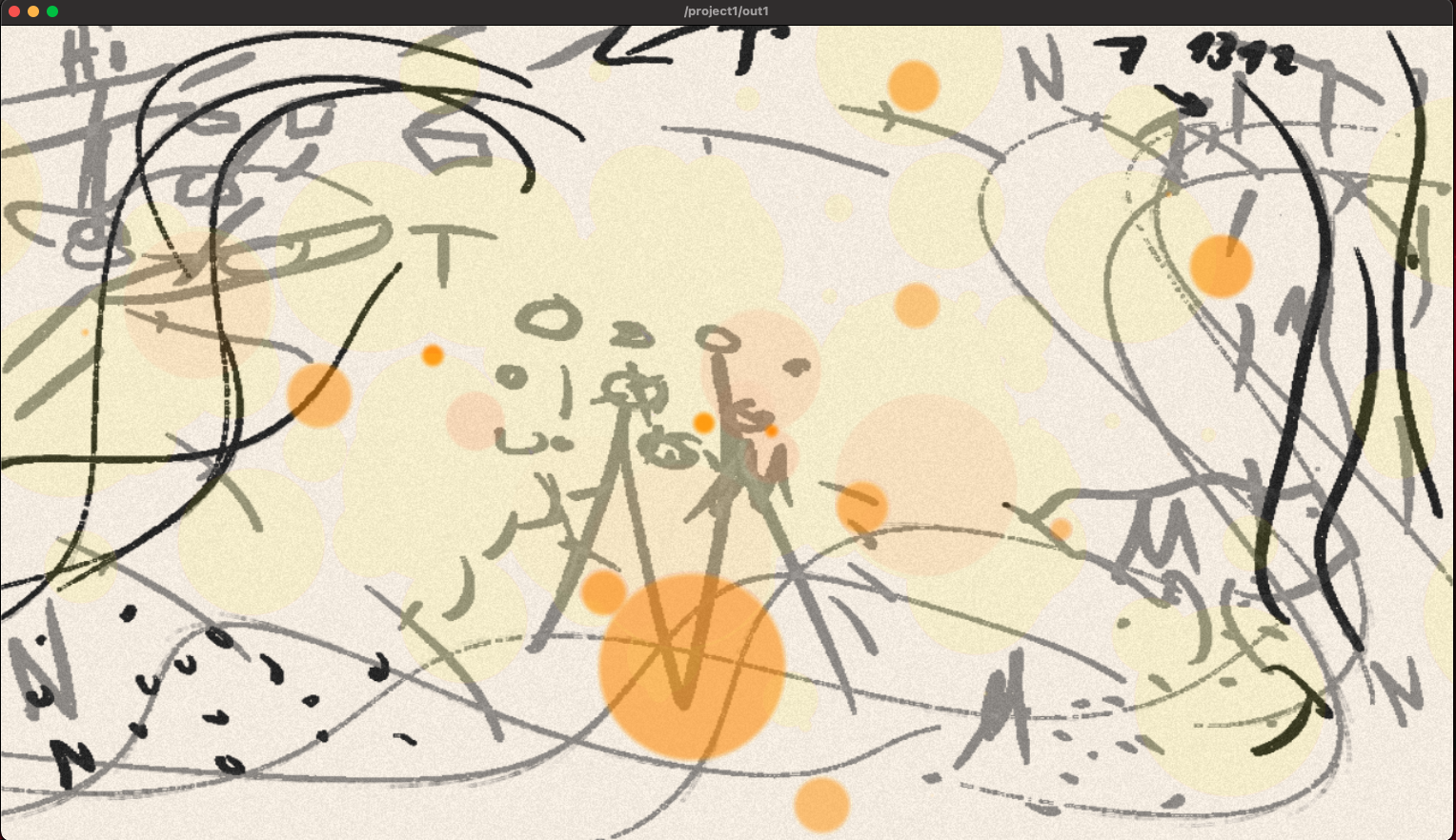
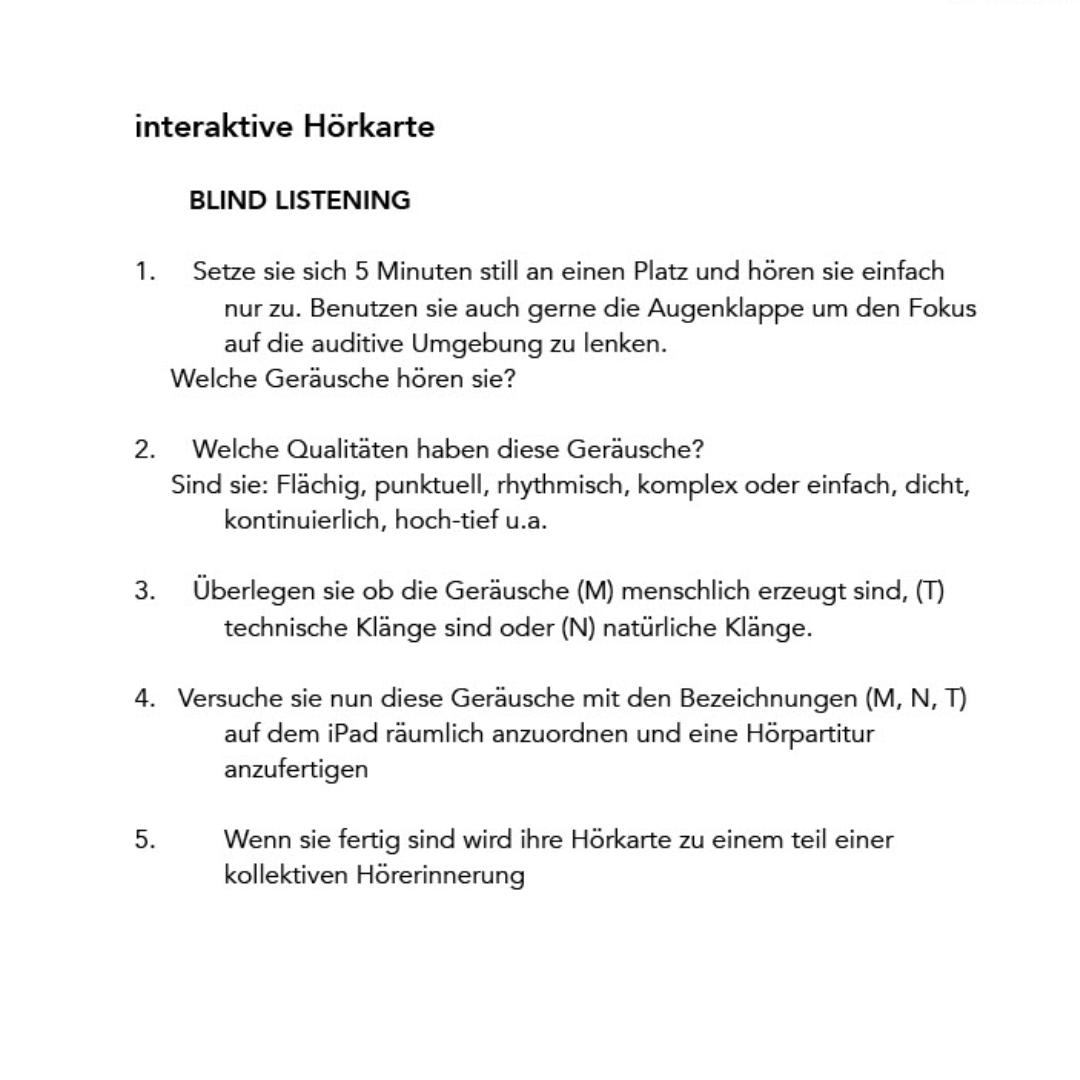
ongoing Projekt together with Leonie Kerst
...


